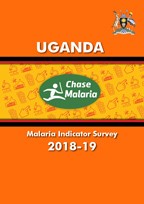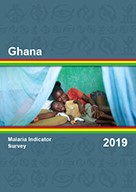Because Mosquitos Are Not Under Lockdown

In response to the COVID-19 pandemic, The DHS Program has paused in-person survey trainings and activities. Recognizing the desire for opportunities to showcase new survey results despite global stay-at-home orders and social distancing guidelines, The DHS Program has devised virtual dissemination strategies for surveys.
Since April 2020, The DHS Program has worked with implementing agencies in Uganda and Ghana to virtually disseminate two Malaria Indicator Surveys (MIS). MIS surveys provide data to evaluate and design programs for malaria elimination, but also reveal context-specific data to inform strategies for COVID-19 mitigation, such as access to handwashing facilities and the number of people sleeping in the same space.
In observation of World Mosquito Day 2020, learn more about these two MIS surveys conducted in Uganda and Ghana.
2018-19 Uganda Malaria Indicator Survey (UMIS)
To commemorate World Malaria Day 2020, the Uganda National Malaria Control Division (NMCD), Uganda Bureau of Statistics (UBOS), the US President’s Malaria Initiative (PMI) Uganda, and The DHS Program virtually disseminated the 2018-19 UMIS on April 23, 2020. Dr. Jimmy Opigo, Ministry of Health Assistant Commissioner and head of the NMCD, welcomed the global, virtual audience, and technical remarks were made by James Muwonge of UBOS and Dr. Mame K. Niang of PMI Uganda. More than 100 participants attended the webinar that included a presentation of the 2018-19 UMIS key findings and discussion about the survey results.
“COVID-19 doesn’t lock down mosquitos. Mosquitos aren’t in a quarantine.”
DR. JIMMY OPIGO, UGANDA MINISTRY OF HEALTH, ASSISTANT COMMISSIONER AND HEAD OF THE UGANDA NMCD
About the survey: The 2018-19 UMIS interviewed 8,351 households and 8,231 women age 15-49. The 2018-19 UMIS was implemented by NMCD and UBOS. Financial support for the survey was provided by the United States Agency for International Development (USAID) through the PMI, United Kingdom Department for International Development (DFID), Government of Uganda with Global Fund support, and World Health Organization (WHO).
2019 Ghana Malaria Indicator Survey (GMIS)
The 2019 GMIS was implemented by the Ghana Statistical Service (GSS) in close collaboration with the Ghana National Malaria Control Programme (NMCP) and the National Public Health Reference Laboratory (NPHRL) of the Ghana Health Service (GHS). On July 28, 2020, the 2019 GMIS results were virtually disseminated during a webinar.
Professor Kwadwo Ansah Koram, former Director of the Noguchi Memorial Institute for Medical Research, chaired the webinar. Professor Samuel Kobina Annim, Government Statistician of GSS, thanked the survey teams for their commitment to collecting high quality, accurate data. Dr. Keziah L. Malm, Programme Manager of NMCP, provided an overview of malaria control strategies. US Ambassador to Ghana Stephanie S. Sullivan spoke of the collaboration between the US and the government of Ghana to improve malaria treatment, control, and prevention. Representatives from GSS and NMCP presented the results of the 2019 GMIS and facilitated a Q&A discussion about the implications of the survey findings. An additional webinar for the media was produced, highlighting GMIS survey findings and data use tools.
About the survey: The 2019 GMIS provides up-to-date estimates of basic demographic and health indicators for malaria at the national level, for urban and rural areas, and for each of the 10 former administrative regions. A total of 5,181 women age 15-49 were interviewed, representing a response rate of 99%. Financial support for the survey was provided by USAID through PMI, the Global Fund to Fight AIDS, Tuberculosis, and Malaria, and the Government of Ghana.



